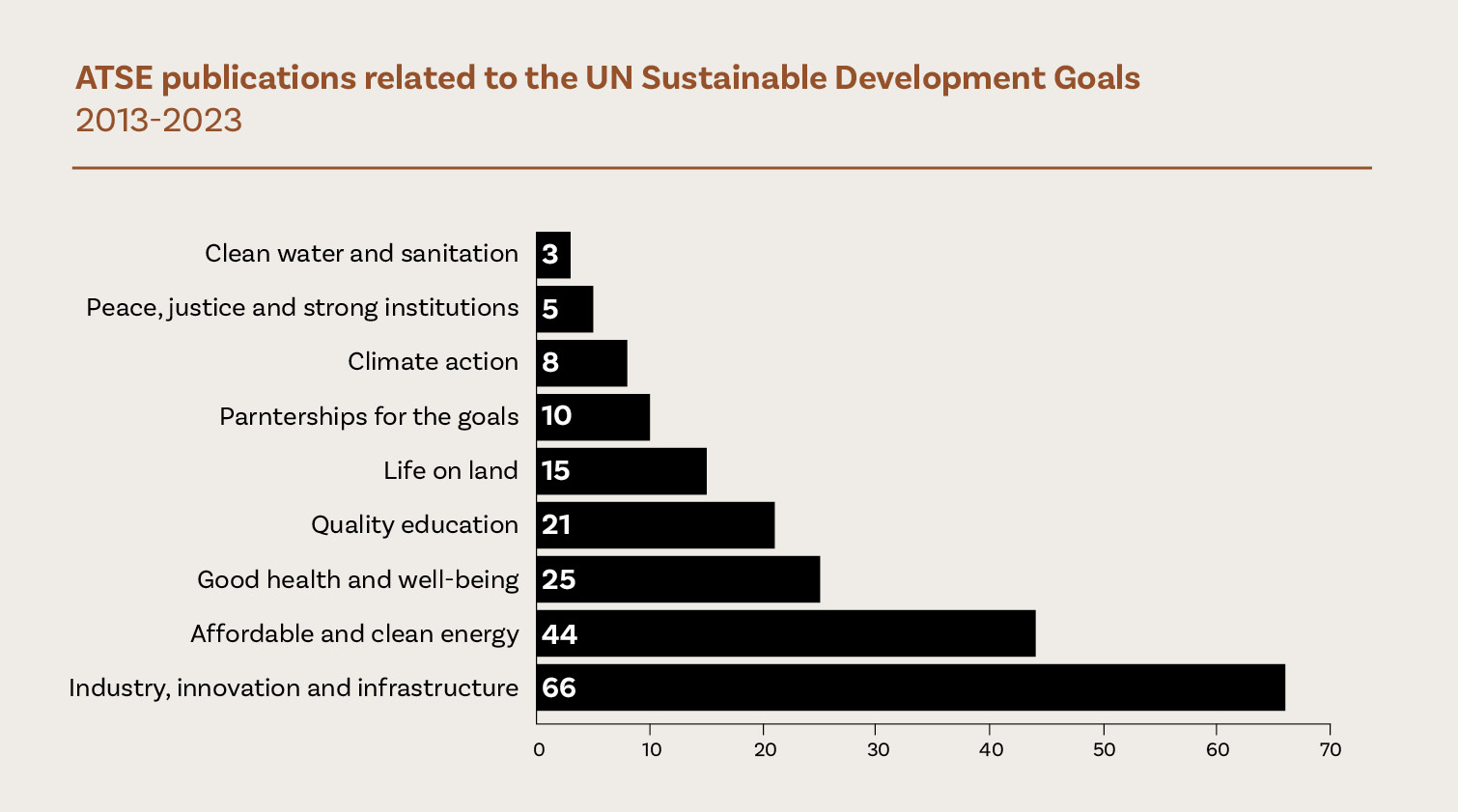The 2030 Agenda for Sustainable Development, adopted by all United Nations (UN) Member States in 2015, provides a shared blueprint for peace and prosperity for people and the planet, now and into the future. At its heart are the 17 Sustainable Development Goals (SDGs), which are an urgent call for action by all countries — developed and developing — in a global partnership. Interconnected, they recognise that ending poverty and other deprivations must go hand-in-hand with strategies that improve health and education, reduce inequality, and spur economic growth, all while tackling climate change and working to preserve our oceans and forests.

As a national Academy with many connections to international researchers and with our Fellows working towards global solutions for issues such as climate change, pandemics, and food security, ATSE has strong alignment with the 17 United Nations Sustainable Development Goals. In order to make the 2030 Agenda a reality, broad ownership of the SDGs must translate into a strong commitment by all stakeholders to implement the global goals.
Charting a global path
In addition to my involvement with ATSE, I am part of a broader network linked to other engineering institutions. This part of my journey sets the stage for sharing my experiences and reflections on ATSE's connection to the United Nations SDGs.
Between 2018 and 2022, I had the honour of shaping the centenary celebration for the Institution of Chemical Engineers (IChemE). As part of this momentous occasion, we embarked on a quest to explore society's expectations out to the year 2100. It was a fascinating journey that allowed me to engage with exceptional minds and gather their thoughts on this topic. Interestingly, a recurring theme emerged from these conversations - the urgent need for society at large to work towards achieving the United Nations Sustainable Development Goals.

Coincidentally, in 2020, ATSE received a request related to the UN SDGs. The Chair of the International Council of Academies of Engineering and Technological Sciences (CAETS) Sustainable Development Working Group, the Royal Academy of Engineering, approached us with three thought-provoking questions:
- How are Academies demonstrating leadership in sustainability and the SDGs at a national level?
- To what extent is engineering's vital role in achieving the SDGs reflected in national sustainability plans? Can we find examples of stewardship from the engineering community?
- How has the COVID-19 pandemic affected the communication of sustainability plans and targets? How are national engineering communities ensuring that recovery plans align with sustainability?
The questions are intriguing, but they present a challenge.











